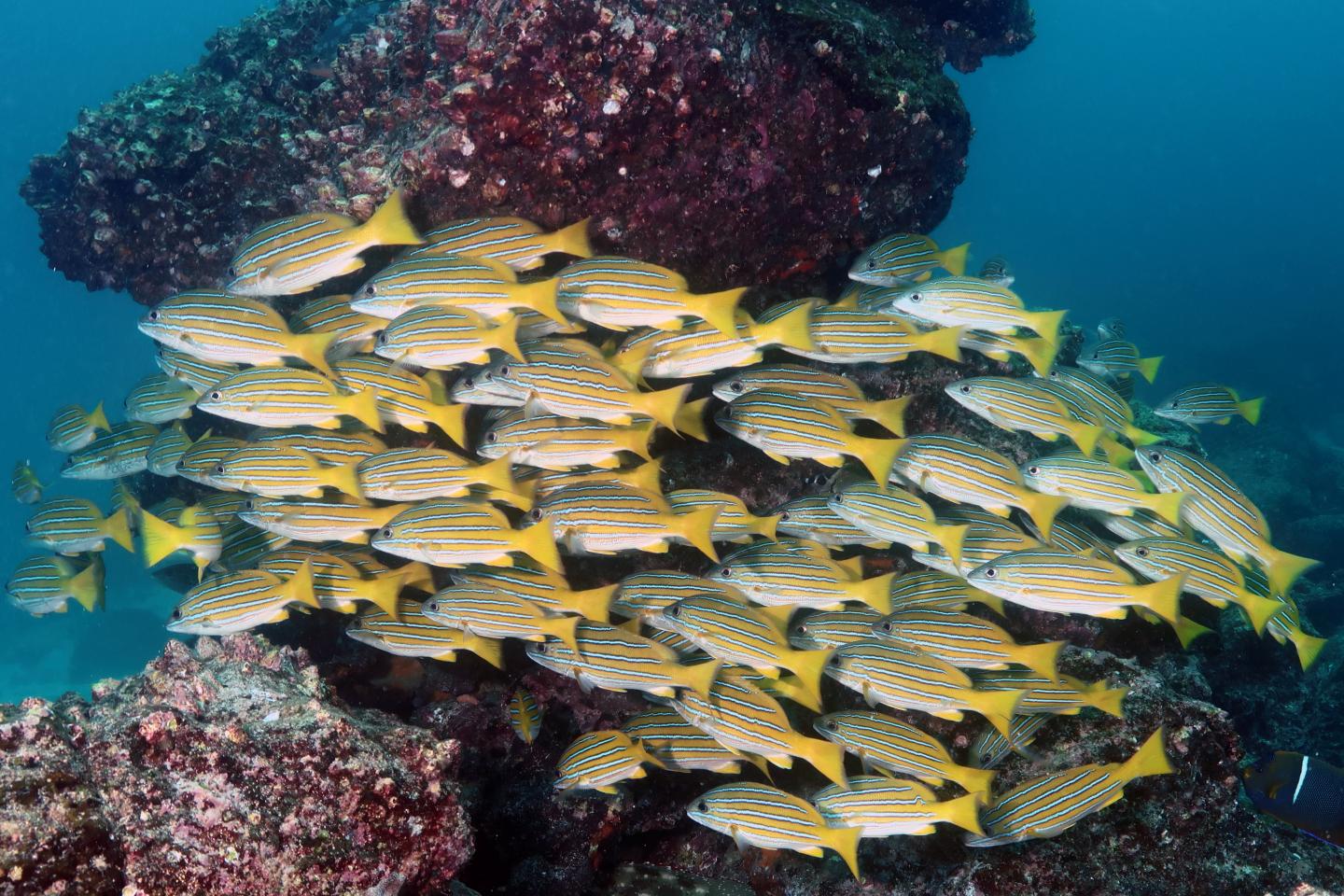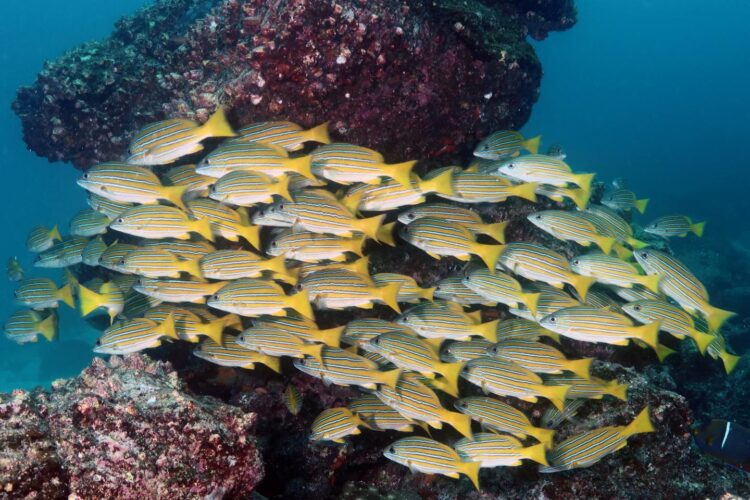
Credit: Lutjanus viridis photographed by R. Betancur, Mosquera & Seymour, Galapagos, 10 Feb. 2017.
The stickleback is a well-studied system in freshwater lakes, but the evolution of convergent morphotypes that occupy different positions in the water column in marine environments is less clear. An international group of scientists led by researchers at the University of Oklahoma decided to test the extent to which independent transitions from bottom to midwater habitats in marine fish species from different oceanic basins resulted in the recurrent evolution of body shape morphologies, comparable to those documented in sticklebacks.
The motivation for this study was based on the book, Wonderful Life (ca. 1989), by noted Harvard University paleontologist and evolutionary biologist Stephen J. Gould.
The OU-led study, “Evolutionary determinism and convergence associated with water-column transition in marine fish,” which was published by Proceedings of the National Academy of Sciences of the United States and facilitated by funding from the National Science Foundation, was guided by researchers at OU, including Ricardo Betancur-R, assistant professor of biology, and Dahiana Arcila, assistant professor of biology and assistant curator at the Sam Noble Oklahoma Museum of Natural History, along with biology postdoctoral student Melissa Rincon-Sandoval and biology graduate students Emanuell Duarte-Ribeiro and Aintzane Santaquiteria.
It also involved collaborators from George Washington University, the Smithsonian Institution, Scripps Institution and Old Dominion University in the United States, as well as James Cook University in Australia and the Universidad Nacional de Colombia.
The study entailed the collection of genome-wide DNA data for over 100 species of snappers that include commercially important food fish (e.g., the red snapper) and are found in tropical and subtropical waters of all oceans around the world where some species are are closely associated to coral reefs or rocky substrates, while others live almost exclusively in midwaters. It also aggregated data layers for body shape, ecological habitat, geographic distribution, and paleontological and geological information.
Like with sticklebacks, snappers provide a unique evolutionary system to assess the degree to which transitions along the water column have consistently resulted in the evolution of similar body plans. Betancur-R and his team rigorously tested these ideas showing multiple independent incursions into the water column by ancestral bottom lineages in all major oceans throughout the 45-million-year history of snappers. These evolutionary transitions are persistently associated with convergent phenotypes, where deep-bodied benthic forms with truncate tail fins have repeatedly evolved into slender midwater species with furcate tail fins–adaptations to reduce hydrodynamic drag and promote swimming performance. The recurrent evolution of this pattern across distantly related groups suggests that limited sets of high-fitness solutions exist due to environmental constraints.
In his book, Wonderful Life, Gould proposed a famous thought experiment. He suggested that if we could replay the tape of life many times with the same starting conditions, each time we would achieve a drastically different outcome.
While we cannot replay the tape of life, we can still see what the evolutionary outcomes are under similar ecological conditions in different locations. In the last couple of decades, Jonathan Losos and other evolutionary biologists have shown that replaying of the tape of life in space rather than time has indeed produced repeatable and predictable results.
One such example comes from the anole lizards in the Greater Antillean islands. The research of Losos and his team has contradicted Gould’s thesis, as very similar set of specialist anole species have independently and convergently evolved in each of the major islands.
While anole lizards provide a textbook example of evolutionary predictability in terrestrial habitats, similar processes have also been identified in aquatic organisms. For example, the three-spined stickleback is a small marine fish that is native to the coasts of North America, Europe and Asia. Remarkably, this species has independently colonized thousands of freshwater streams and lakes around the world. Most colonization events have resulted in the evolution of a midwater form that is slender-bodied and feeds on zooplankton, and a benthic form that is deep-bodied and feeds on large bottom invertebrates. Like with the anoles, divergent morphs in each lake are more closely related to one another than each are to their ecologically equivalent counterparts in different lakes.
Counter to Gould’s premise, researchers could predict that if a new lake were to form, it will eventually be colonized by marine sticklebacks that will evolve into slender-bodied midwater and deep-bodied benthic forms.
The stickleback is a well-studied system in freshwater lakes, but the evolution of convergent morphotypes that occupy different positions in the water column have been far less studied in marine habitats. Challenging Gould’s ideas, the researchers show that convergent ecological and functional phenotypes are pervasive among different lineages and across vastly different snapper lineages of different ages, achieving predictable solutions for similar environmental challenges, ultimately demonstrating strong evolutionary determinism in body-shape evolution.
###
Media Contact
Ricardo Betancur-R
[email protected]
Related Journal Article
http://dx.





